The answer, as to many engineering questions, is "it depends". The most cautious advice is that you can allow current to flow from any rail to any other rail provided that the specified minimum output load current (which may be zero) is drawn from any rail.
What is the minimum load, you ask? It's specified in the ATX specification. In no case should you allow a rail that normally sinks current to source current or vice versa. That's what "0" means.

Should you break that rule, the voltages present at the rails may go outside of tolerance and (worst case) damage the supply or something attached to the rail (one exception to the minimum load rule is that if you open all the outputs, damage should not occur to the supply, but the supply is not guaranteed to operate).
For example, the 5V rail could rise to 8V, exceeding the rating most 5V chips as well as the output filter capacitors. High quality supplies may have OVP (overvoltage protection) which will likely prevent damage to the supply or attached load.
On the other hand, there are ATX power supply designs that stack a 7V rail on top of the 5V rail to give +12V, such as this one. You can draw current from the +12V rail to the 5V rail on this one (but not the 3.3V rail).

There's no guarantee that you'll get a supply made this, so it's best to stay within the specifications that all ATX supplies must meet. There are multiple revisions of the specifications.

